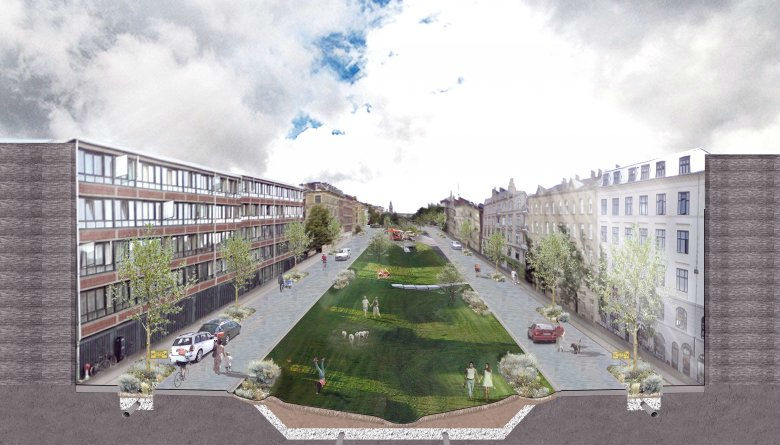Emergency flood channels
Emergency flood channels are channels that convey rainwater from cloudbursts towards a receiving water body.
Emergency flood channels can be established in the form of roads with a V-shaped profile, roads with trenches/drains and raised kerbing, or roads with hollow kerbing and pavements. Emergency flood channels can be supplemented with separate stormwater pipes for coping with normal rainfall. Road profiles and kerbing must be dimensioned to avoid flooding of shops and basements in cloudburst situations in which rainwater builds up over the entire road surface.
Emergency flood channels are typically established along roads located between main traffic routes, as runoff paths can lead to poorer local accessibility.
Emergency flood channels can be designed so that they not only convey water during cloudbursts but also collect the water during normal rainfall events and can therefore be used to disconnect normal rainfall from the sewer systems so that these are better able to manage the increased amount of precipitation.
Emergency flood channels can be combined with green roads and spaces which detain the water before it is conveyed into the emergency flood channels. The water can be detained in roadside infiltration beds, permeable paving, behind speed bumps, or in trenches with overflow drains.

Senest redigeret:
04-02-2014